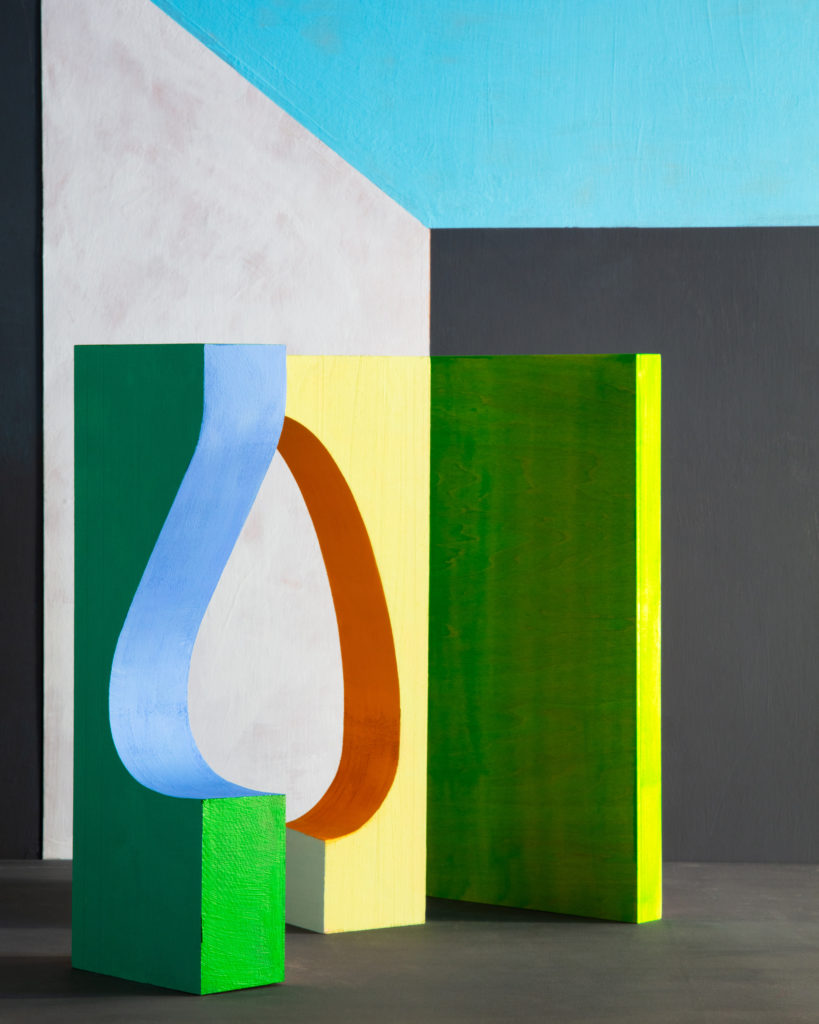Erin O’Keefe: Seeing Things
Denny Dimin Gallery, New York City
By Stephanie Cash

While it’s true that things aren’t always what they seem, it’s also true that things can be hidden in plain sight. A show of new works by Erin O’Keefe embraces both maxims. Just as Photorealist painters flipped the script on their medium, a number of photo-based artists of late have been tinkering with processes and materials to painterly effect. Consider the process-based abstractions by Matthew Brandt and Alison Rossiter, or even the video reenactments of Old Master works by Eve Sussman and Bill Viola.
O’Keefe works in similar vein. Her photos resemble canvases by many a mid-century abstractionist, with bold colors and geometric shapes. It takes a close look to see the images for what they are: three-dimensional sculptural tableaux, essentially still lifes of color and form and, more subtly, space and light. But O’Keefe achieves her painterly effect through compositional and spatial trickery (and a bit of paint). Despite the ocular deception, the images are straightforward, unmanipulated photographs of wood forms the artist strategically arranges for the camera.
Trained as both an artist and an architect, O’Keefe merges those disciplines here by defining space with paint, sculpture, and photography. She uses a jigsaw to slice curvilinear forms from small wood blocks and then roughly paints the surfaces and edges in contrasting or complementary colors, leaving visible brushstrokes that in the photos read as thinly applied paint on canvas. Printed as large as 50 x 40 inches, the images are larger than their real-life counterparts, further complicating the perception of scale and space.
O’Keefe arranges the pieces on a mini set, visually aligning tops or edges so that, when viewed through the eye of the camera, they seem to merge. The pictorial space is flattened, pushing the colored forms into the same plane. Also included in the show are wall-hung constructions that similarly toy with spatial perception. Variously configured boxes contain mirrors and painted, angled elements that interact with each other as well as with the photos captured in reflections. Sometimes the source of the reflected image can be hard to pinpoint, as when the gallery’s pressed-tin ceiling incongruously appears inside a small box. In that sense, the constructions knit together the entire show, upending expectations and challenging assumptions.
Published in the November/December 2019 issue of Photograph magazine.
